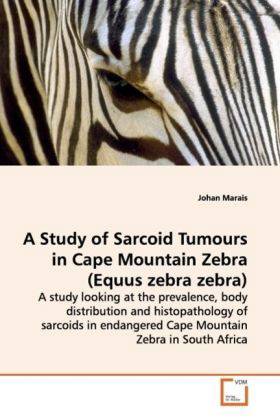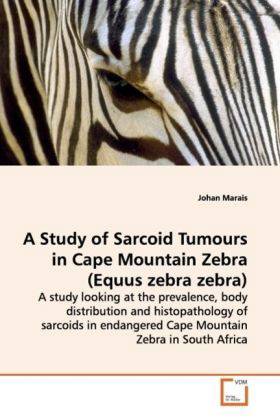
- Afhalen na 1 uur in een winkel met voorraad
- Gratis thuislevering in België vanaf € 30
- Ruim aanbod met 7 miljoen producten
- Afhalen na 1 uur in een winkel met voorraad
- Gratis thuislevering in België vanaf € 30
- Ruim aanbod met 7 miljoen producten
Zoeken
A Study of Sarcoid Tumours in Cape Mountain Zebra (Equus zebra zebra) - A study looking at the prevalence, body distribution and histopathology of sarcoids in endangered Cape Mountain Zebra in South Africa
A study looking at the prevalence, body distribution and histopathology of sarcoids in endangered Cape Mountain Zebra in South Africa
Johan Marais
Paperback | Engels
€ 48,45
+ 96 punten
Omschrijving
The equine sarcoid, a locally aggressive, fibroblastic skin tumour, is the most common skin neoplasm reported in horses. The Cape mountain zebra (CMZ) has been described as one of the most vulnerable mammals in South Africa. The possibility exists that the existing populations arose from a very small gene pool and that they are considerably inbred. A reduction in major histocompatibility complex diversity due to genetic bottlenecks and subsequent inbreeding probably contributed to uniform population sensitivity and the subsequent development of sarcoid in two CMZ populations, namely in the Bontebok National Park and Gariep Nature Reserve. The entire population of CMZ in the Bontebok National Park was observed and sampled during 2002 to document the prevalence and body distribution of sarcoids. During the same year, a comparative study was carried out on an outbred population of Burchell's zebra in the Kruger National Park. The prevalence in CMZ in the Bontebok National Park was 53 %, while the Burchell's zebra in Kruger National Park had a prevalence of 1,9 %. The most common sites for sarcoid in CMZ were the ventral abdomen and limbs.
Specificaties
Betrokkenen
- Auteur(s):
- Uitgeverij:
Inhoud
- Aantal bladzijden:
- 72
- Taal:
- Engels
Eigenschappen
- Productcode (EAN):
- 9783639108842
- Verschijningsdatum:
- 6/01/2009
- Uitvoering:
- Paperback
- Formaat:
- Trade paperback (VS)
- Afmetingen:
- 152 mm x 229 mm
- Gewicht:
- 108 g

Alleen bij Standaard Boekhandel
+ 96 punten op je klantenkaart van Standaard Boekhandel
Beoordelingen
We publiceren alleen reviews die voldoen aan de voorwaarden voor reviews. Bekijk onze voorwaarden voor reviews.











